Cut-away view of The Rosalila Temple
(13 November 2000)
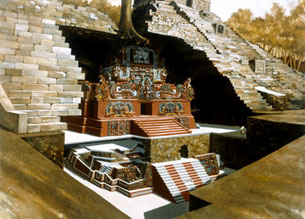
The ancient Maya painted some of their ornate temples with mica to make them sparkle in the sun, a new study suggests. Scientists discovered traces of the shiny mineral while analyzing flakes of paint taken from the Rosalila temple in Copán, Honduras.
The temple, built in the sixth century A.D., today sits "entombed" in a giant pyramid built around it. The covering of sparkling paint likely gave the sacred site a dazzling appearance, said the study's lead author, Rosemary Goodall, a doctoral student in physical sciences at Australia's Queensland University of Technology.
"The mica pigment would have had a lustrous effect," Goodall said. "Mica is used today in paints for that very purpose - to create a shimmering finish to the paint." "The gleaming paint also appears to have been applied periodically, perhaps in honor of important anniversaries or ceremonial events," she added.
Shining Masks
Goodall's team used a new infrared analysis technique to study red, green, and gray paint applied to stucco masks that appear on the exterior of the well-preserved temple. The technique reads the chemical "signature" of each particle it samples, she explained.
"We've been unable to differentiate the different particles that have made up the paint," she said, "but by using this technique, I'm able to get an image of the surface of the material and spatially separate the different particles in that paint. It gives you a lot more information much more rapidly." The mica used in the paint likely came from beyond the Maya realm, Goodall said. "It appears that mica was available in what is now Guatemala. [The Maya] would have had to trade for something like that."
Analysis of such materials used by the Maya offers "an insight into their technology and knowledge exchange and trade networks," she said. "It gives us an insight into how people in the southern periphery [of the Maya realm] interacted with people in the more northern regions." The team's findings are published in the Journal of Raman Spectroscopy.
For Special Occasions?
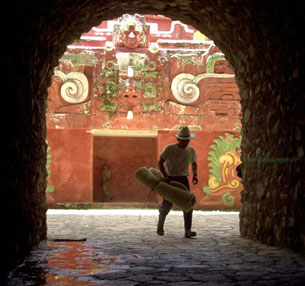
Mica has only been found on the Rosalila temple so far, she said. "The building was in use for one hundred years - we know that because [the Maya] dated the opening ceremony of the building, and they dated the closing ceremony. It was repainted somewhere between 15 and 20 times, but mica was only used, I estimate, in every fourth or fifth repainting. It's not on every layer. More than likely there was something very significant about when they used it, if it was only used infrequently," Goodall said.
"The Maya had very regular calendar periods, so the next step is to look at the core [of the paint layers] and see if we can find out the frequency of [mica's] use, which may give us an indication of whether or not it was applied to celebrate one of these period endings, or to mark some significant date."
Cynthia Robin is an anthropologist and Maya expert at Northwestern University in Illinois. "I think that's a very interesting idea," Robin said of Goodall's theory, "because the Maya numerical system is a base-20 system, so their calendar is based on a 20-year period called a katun. We know from hieroglyphs that these katun endings, or these 20-year periods, were important times of ceremony in the life of the king. Obviously Rosalila would have been a very important place for Copán's royalty."
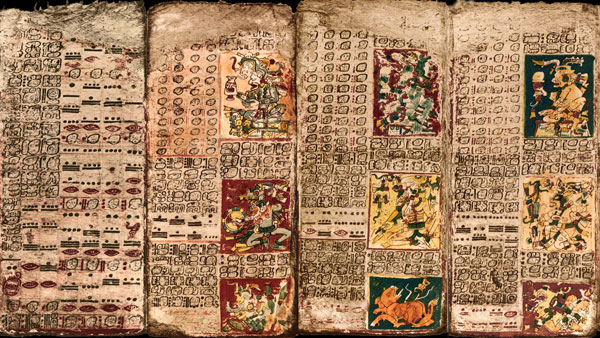 Dresden Codex
Dresden Codex
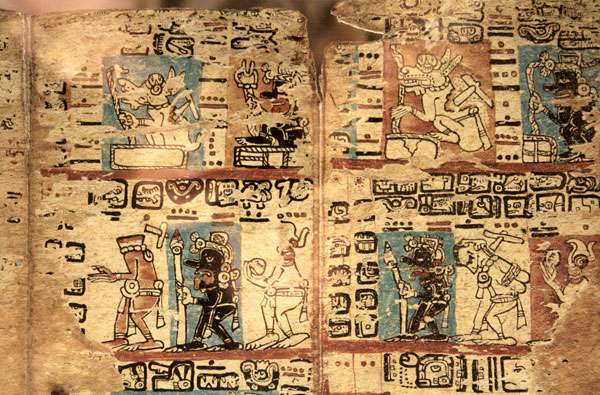 Madrid Codex
Madrid Codex
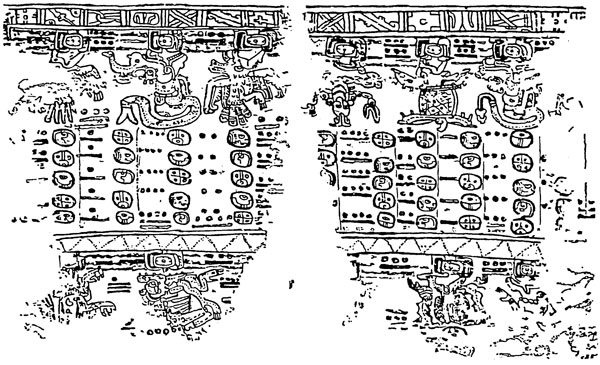 Paris Codex
Paris Codex
 Grolier Codex
Grolier Codex
 The Maya Civilisation
The Maya Civilisation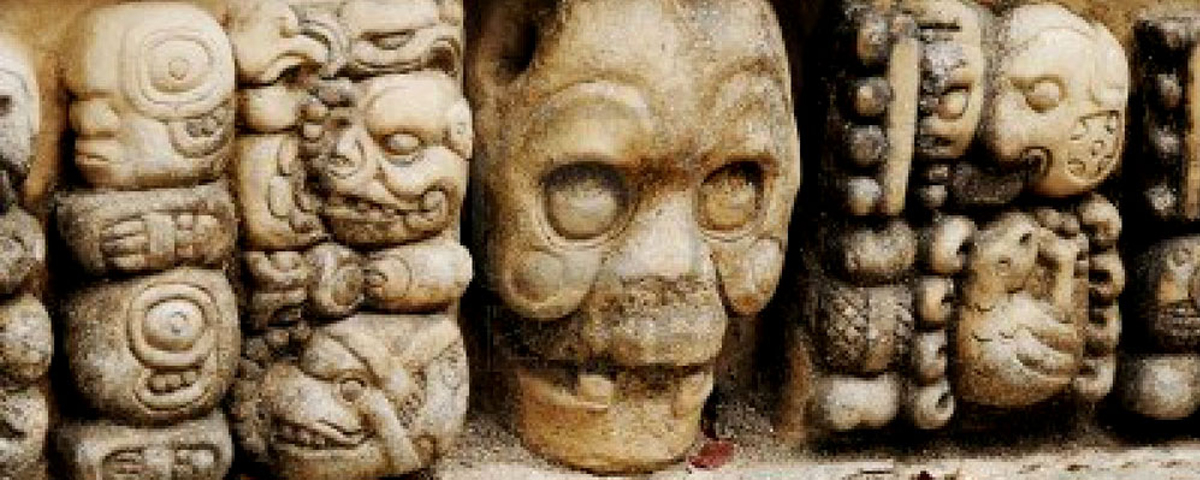
 Dresden Codex
Dresden Codex
 Madrid Codex
Madrid Codex
 Paris Codex
Paris Codex
 Grolier Codex
Grolier Codex